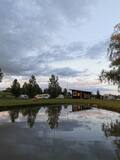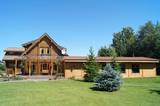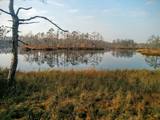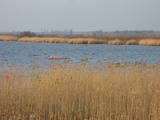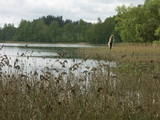| Nr | Name | Beschreibung |
|---|---|---|
|
You are offered horse-riding along the picturesque forests and individual horse-riding lessons. |
||
|
Mūsu saimniecībā iespējams ganīties, vārtīties, skrieties un spelēties kopā ar kazām. Ja kādam no šāda piedāvājuma dūša papēžos, iespējams apskatīt trušu saimi. Tā kā tie ir truši, tad kopā ganīšanās un spelēšanas te iet secen. Ekskursijas noslēgumā mūsu saimniecībā saražoto gardumu nogaršosana. Ja kas īpaši gājis pie sirds, to var arī iegādāties. Sniegotā ziemā piedāvājumā pārgājiens uz strautu un smilšakmens alu burvīgu āžu un kazu sabiedrībā kā noslegumā, lai sasilditos, kopīga ugunskura tējas baudīšana- tējas biezumi jāatdod āžiem (viņiem tie ļoti garšo!). Nelielām kompānijām iespēja sasiet savu personalizēto kazu piena sieru. Ideāli- jaunlaulātiem kopīgiem spēkiem izveidot savu sieru, tā teikt- pirmais kopīgais produkts.
|
||
|
Divstāvīgs skatu tornis pie Laikjula (Laiküla) – Hāpsalu ceļa, no kuras paveras plaša ainava uz Matsalu līcī ietekošo upīšu palieņu pļavām. Te var vērot migrējošās dzērves un zosis, bet pavasaros varbūt laimēsies redzēt vai dzirdēt ķikutu Gallinago media. Viens no retajiem torņiem, kas ir pielāgots cilvēkiem ar īpašām vajadzībām. |
||
|
Gelegen am linken Ufer des Emajõgi Flusses, am Fuß des Dombergs. Der Mittelpunkt der Altstadt ist der im Stil des Klassizismus gebaute Rathausplatz mit dem Rathaus und dem Springbrunnen „Die küssenden Studenten“, der ein Stadtsimbol ist. |
||
|
Der ehemalige Panzerweg für Versuchsfahrten, der durch die Wälder der Küste von nördlichen Teil von Ventspils (von Panzerabteilung im nördlichen Teil) bis zu Oviši führte. Heutzutage ist hier ein breiter, sandiger und zuwachsender Durchhau erhalten geblieben.
|
||
|
Lakeside Sigulda is a quiet camping and recreation area on the territory of Lake Matinu. Offers relaxation, overnight stays near nature and picnic options in a quiet environment. Travelers with campers, caravans, as well as those staying in tents can stay overnight in the camping area. In addition, a well-equipped glamping tent for 2 people has also been created. Showers, toilets, outdoor kitchen, picnic areas, grills, internet and electricity connection are available for camping guests. SUP boards are available for active recreation. |
||
|
Das Gästehaus "Aizvēji" liegt nur 50 km von Riga und 200 m vom Sandstrand der Küste von Vidzeme entfernt, in einer ruhigen, landschaftlich gestalteten Umgebung. Ein Komplex für Feste und Erholung, Tennisplatz, Verpflegung für Veranstaltungen. Blockhaus mit zwei Bankettsälen und gemütlichen Räumen. Das Sommercafé befindet sich getrennt vom Gästehaus. |
||
|
Cena's heath swamp's trail was made to introduce vistors to one of the most beautiful things in nature - a moss swamp. The pathway goes not only around beautiful swamp lakes but also meets the degraded part of the swamp. At the beggining and the end is a watch tower. |
||
|
Saimniecība nodarbojas ar 15 veidu vīna darīšanu no Latvijas augļiem, ogām un citām dabas veltēm, kā arī vīna destilāta ražošanu. Vīna darītavā vīndaris pastāstīs par vīna izgatavošanu un dalīsies savā pieredzē. Uz vietas iespējams nobaudīt dažādus izsmalcinātus augļu un ogu vīnus, meklējot sev tīkamākās garšu un smaržu nianses. Vīna darītava sadarbojas ar vietējo zemnieku saimniecībām, tēdēļ pie vīna iespējams nobaudīt sieru no govs vai aitas piena un Bauskas pusē ražotus saldumus. |
||
|
The key treasure in this park is that it has a lake that is one of the most intensive sites for birdwatchers in all of Latvia. It also features outstanding flora and the shallow waters of the Bay of Rīga. Recommended: Hike along the seashore from Mērsrags to Engure (20 km). See wild domestic animals (horses and cows) on the eastern shore of Lake Engure. There’s a bird-watching tower on the NW shore of the lake (approach from Kūļciems, where you can see domestic animals adapted to life in the wild, including the Blue Cows of Latvia). A bird-watching tower can be found at a place called Jomiņa near Mērsrags, where the seashore meadow is an uncommon biotope
|
||
|
Organisation von Workshops für udmurtische und andere finno-ugrische nationale Küchen, Kennenlernen der Kulturen anderer Völker durch das Essen. |
||
|
Stolz des bäuerlichen Betriebs sind ~ 100 Ziegen, von deren Milch Käse, Quark und Joghurt hergestellt wird. Exkursion zum Hof, Anschauen der Tiere, Verkostung und Erwerb der gesunden BIO-Produkte. In einem nahegelegenen Teich kann man angeln. Die gefangenen Fische kann jeder selber grillen. |
||
|
Ein seichter, eutrophischer (mehr als 60% Sättigung), lagunenähnlicher See, dessen Schutzgebiet den überwuchernden See und die ihn umgebenden Feuchtwiesen erhalten soll. Es gibt mehr als 60 Arten von Nistvögeln in dieser Gegend. Das Dammsystem am Südufer des Sees kann von den Besuchern als Beobachtungsstandort genutzt werden.
|
||
|
Vairākas salas Zvirgzdenes ezerā, uz kurām saglabājušies platlapju (ozolu, liepu) meži ar bagātīgu zemsedzes floru. Salas var redzēt no ceļiem, kas piekļaujas ezera ziemeļu un austrumu krastam. |
||
|
Sprižu ģimenes bioloģiskā saimniecība "Dabas Gardumi" atrodas Mārupes novadā un tā apsaimnieko ogulājus 23 ha platībā. Audzē avenes, upenes, jāņogas, ērkšķogas, sausseržus, piparmētras, ābolus, plūmes u.c. Visas ogas svaigā veidā tiek piedāvātas sezonas laikā, kā arī tiek pārstrādātas, no kurām ražo dažādus augļu - ogu gardumus: augļu-ogu bumbiņas, salmiņus, sulas, marmelādes un tējas. Saražotā produkcija ir dabiska, garšīga, veselīga, šķiedrvielām un vitamīniem bagāta, jo pārstrādes procesā augļiem, ogām un garšaugiem tiek saglabāts pēc iespējas lielāks tā dabiskais sastāvs. Pārsvarā gardumi top no pašu izaudzētiem un savāktiem dabas izejmateriāliem (augļi, ogas, garšaugi), ražotajiem produktiem netiek pievienots cukurs, līdz ar to augļu-ogu gardumi ir lieliska gan ikdienas, gan svētku uzkoda kā maziem, tā arī lieliem baudītājiem. |
||
|
The cafe is situated in the shopping centre Sala in Jekabpils, on the right back of the river Daugava. The cafe’s premises are comfortable and decorated with fresh flowers. It is a place where you can have either breakfast, dinner or supper. Working hours: 9.00 - 20.00 |
||
|
The owner of the venue makes homemade wine on the basis of traditions that have been handed down from generation to generation. You can taste four different wines along with snacks and engage in philosophical discussions about winemaking recipes. You can also buy the wines. |
||
|
Eine gut eingerichtete Strecke des Flusses Driksa (ein Nebenarm des Flusses Lielupe) mit einer zweistufigen Promenade, der im Baltikum einzigartigen Brücke Mītava, Aussichtsplätzen, dem Denkmal Student von Jelgava u.a. |
||
|
Im Zentrum von Lielvārde, nur 5 Gehminuten von der Daugava entfernt, befindet sich eine Schnellgaststätte mit einer abwechslungsreichen Speisekarte. Lettische Küche: Kalte Suppe, Suppe aus frischem Kohl, gebratener Karpfen oder Wels, Frikadellen, Braten, graue Erbsen mit Speck, Pfannkuchen. |
||
|
Diese Tour kombiniert kulinarische Erlebnisse mit dem Besuch beliebter Touristenziele in Südestland. Sie besuchen Võru und Rõuge, lassen sich von der südestnischen Landschaft im Haanja-Naturpark verzaubern und schauen vom Aussichtsturm auf Estlands höchster Erhebung – dem Suur Munamägi („Großer Eierberg“) – in die Ferne und nach Setomaa, das „Land der Setus“. Dorthin fahren Sie danach und werden herzlich willkommen geheißen von einer kleinen ethnischen Volksgruppe, die ihre einzigartigen Traditionen und ihre Sprache bis heute lebendig hält. Menschen leben seit etwa 8.400 Jahren in Setomaa. Auf der Rundtour verkosten Sie estnische Weine aus Beeren und Früchten, besuchen eine Ziegenfarm, die erstklassigen Käse herstellt und verspeisen ein herzhaftes Bauerngericht auf einem ländlichen Gehöft. Die Route beginnt und endet in Tartu, kann aber auch in Tallinn oder Riga begonnen oder beendet werden. |
||







